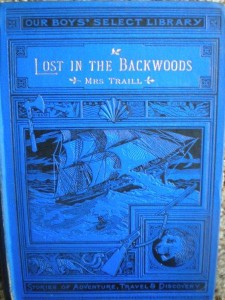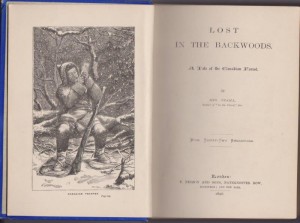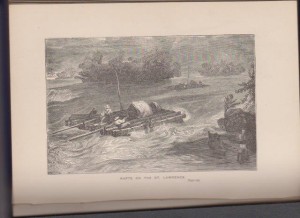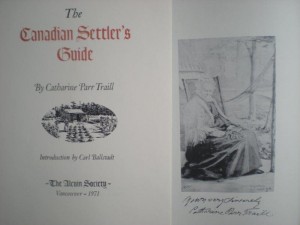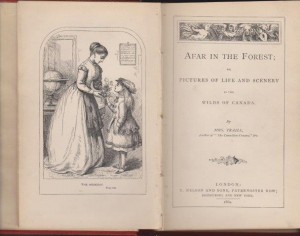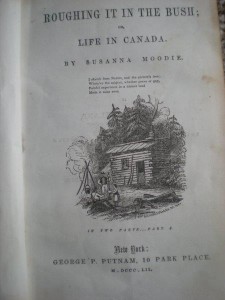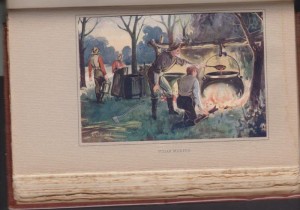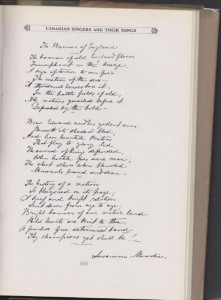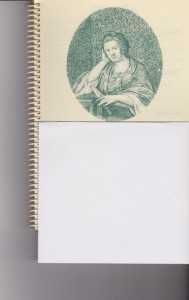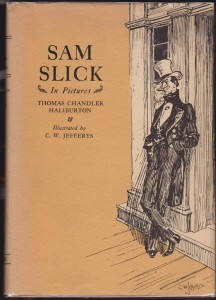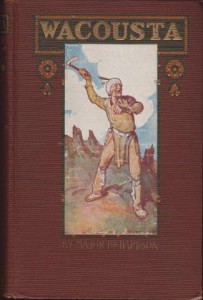(left to right/top to bottom: cover of Lost in the Backwoods, 1896 London ed. of The Canadian Crusoes, Canadian Trapper frontispiece to title page, p. 125 illustration of Rafts on the St. Lawrence; title page and author photo at 94 & signature in The Canadian Settler’s Guide ltd. ed. The Alcuin Society, 1971; frontispiece from Afar in the Forest, or Pictures of Life and Scenery in the Wilds of Canada (London, 1869); title page of Roughing It in the Bush (rare 1st ed.); and from the Dodge 1913 ed. of the same title–picture and signature of Moodie, and R. A. Stewart illustration of “Sugar Making”); “The Banner of England” (autograph poem from Canadian Singers and Their Songs, ed. Edward S. Caswell McClelland & Stewart, 1919)
Catharine Parr Traill (1802-1899) was an English-born writer who settled near Rice Lake, Ontario and then became widely known for Canadian botanical studies and children’s fiction. She was the author of The Backwoods of Canada (1836), The Canadian Crusoes (1852)–published as Lost in the Backwoods in London (1882), The Female Emigrant’s Guide (1854)–later published as The Canadian Settler’s Guide (1855), and Lady Mary and Her Nurse (1856)–later published as Afar in the Forest.
Susanna Moodie (1803-1885) was an English emigrant to Canada as was her sister Catharine Parr Traill. She settled in Peterborough and is best known for Roughing It in the Bush (London, 1852), a personal account of frontier life. In the following century, Moodie’s hardships were revisited, poetically, by Margaret Atwood in The Journals of Susanna Moodie (1970).
As related reading, I would highly recommend Sisters in Two Worlds: A Visual Biography of Susanna Moodie and Catharine Parr Traill by Michael Peterman; Doubleday Canada (2007)

